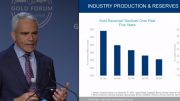China’s slowing economy and sinking stock market are wreaking havoc on already oversupplied commodity markets around the globe.
The last two weeks of turmoil began on Aug. 11, with the Chinese government’s surprise devaluation of the renminbi by 1.9% against the U.S. dollar, in the largest devaluation of the Chinese currency in two decades.
Designed to shore up a weakening Chinese economy, the devaluation was a particular jolt to an international community that had widely expected China to at least maintain the renminbi’s value to strengthen the argument that it should become a respected global reserve currency. Now, people wonder, is this a one-off devaluation or the first volley in a new round of currency wars?
The devaluation also renewed doubts that the micro-managers in China’s central government could gracefully manage a slowdown in the Chinese economy. Things came to a head on Aug. 24 — already dubbed “China’s Black Monday” — as the Shanghai Composite Index extended its dramatic August decline, sinking another 7.6% in early morning trading to below the 3,000 mark for the first time since late 2014, and off an astonishing 42% since its May 2015 peak.
The next day the Chinese government slashed its main interest rate by 50 basis points in the fifth cut in nine months, and loosened lending rules.
A relief rally in Western stock markets quickly fizzled, as the S&P 500 Index officially entered correction territory for the first time in three years, and the so-called Vix “fear index” of market volatility soared as much as 90% to finish at its highest point since October 2011.
After having been only the bane of many Western economies for decades, China’s heavy national debt load has become a growing concern after years of massive stimulus programs, with the debt-to-GDP ratio at a staggering 300. In some ways it feels like the global debt crisis of 2008 never went away — it only shifted locales to flare up again in China.
China’s economy accounts for roughly a third of global growth, and so any slowdown is felt worldwide. The Chinese government’s stated intention of keeping a 7% growth rate this year is something that many observers doubt, some of whom put the number for 2015 at a more realistic 5%.
As everyone in mining knows, commodity markets have been shaken to the core by the latest developments, and the close relationship between the health of the Chinese economy and buoyant commodity prices has never been clearer.
The carnage across the landscape of commodity prices has been wide and deep, with oil prices leading the way down and touching six-year lows on Black Monday, with WTI now trading below US$40 per barrel and Brent trading just above. At press time among the industrial metals, iron ore fines are trading at US$52 per tonne (US$92 a year ago), copper at US$2.23 per lb. (US$3.19), nickel at US$4.34 per lb. (US$8.50), aluminum at US67¢ per lb. (US93¢), zinc at US76¢ per lb. (US$1.08), lead at US74¢ per lb. (US$1.02) and uranium oxide the bright spot by comparison, at US$36.75 per lb. (US$24). And remember how bad everyone felt about metal prices a year ago!
It was good to see precious metals dutifully serving their time-honoured safe-haven role during the worst of the market turmoil in mid-August, but the rally has already lost steam as August draws to a close. Silver — with its many industrial uses, in addition to its monetary and jewellery roles — took a particularly hard hit on Aug. 26, falling to a six-year low of US$13.87 per oz.
The China effect could be seen in super-major BHP Billiton’s newly released financial results, which saw full-year earnings plummet 86% year-over-year to US$1.8 billion — its weakest level since 2003 — owing to declining commodity prices, and despite record production of iron ore, coal and oil, and a ferocious cost-cutting campaign that reduced US$3.8 billion per year in controllable items.





Be the first to comment on "Editorial: Commodities prices follow China’s economy south"